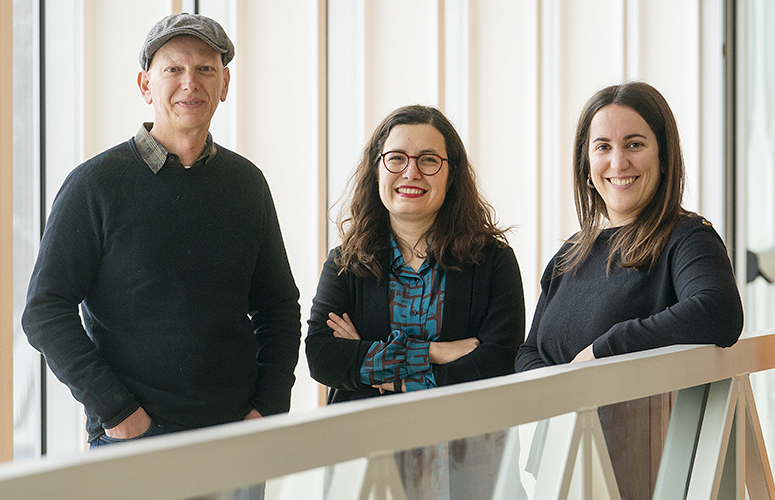A study by the UPV/EHU’s Lindy Lab-Language in Neurodiversity research group offers a more integrative view of camouflaging across the whole autism spectrum, and draws attention to the importance of understanding this phenomenon better and improving current measurement methods in order to propose priorities for future research.
-

Cells very similar to neurons obtained from human dental stem cells
-

The brain resorts to myelin when other brain nutrients are depleted
-

System for calculating the impacts of emissions by large European industrial plants is published
-

Most goals in football result from first touch shots
-

Añana Saltern microorganisms help to clarify the groundwater flow pattern
Seeking to characterise the autistic population more effectively by observing the strategies they use to fit into society
A multidisciplinary team from the University of the Basque Country (UPV/EHU) suggests that delving deeper into the barely studied phenomenon of camouflaging can improve autism research
- Research
First publication date: 24/01/2023

In recent years there has been a lot of talk about camouflaging in autism. However, research into camouflaging is still relatively very recent, its nature has been barely studied and there are a lot of open questions. This work therefore aims to present an integrative view of camouflaging. It can be characterised as the set of strategies adopted by the autistic population to fit into the social world. “Our aim is to understand this phenomenon better and to analyse in depth how camouflaging develops, so that some suggestions can be put forward on how to step up research into it,” said Valentina Petrolini, researcher in the UPV/EHU's Lindy Lab group and one of the authors of the study.
People normally camouflage themselves with two aims in mind: to hide their diagnosis and to fit in socially. “We would say that people camouflage themselves when they rehearse conversations they are going to have, when they imitate other people's gestures and expressions and, in general, when they make an effort to hide their autistic traits,” explained Valentina Petrolini. “Many studies link the attempt by these individuals to pass themselves off as who they are not with high levels of anxiety and long-term mental problems,” added the UPV/EHU researcher.
How is camouflaging detected in the autistic population? Tools, such as tests and questionnaires currently exist, but they overlook a high proportion of people in the spectrum, such as people who unconsciously camouflage themselves, people with intellectual and/or linguistic disabilities, etc. In this work, “we are proposing that information be triangulated by using existing evidence, gathering information from the environment, observing a person's behaviour in different contexts and talking to people in different contexts... in other words, by observing the phenomenon of camouflaging without directly asking the person involved,” said Valentina Petrolini.
Extending the study of camouflaging to groups that are currently overlooked also has significant implications in terms of impact. That is why this study extends the discussion on camouflaging to currently little studied groups on the autism spectrum, i.e. children and adults with linguistic and/or intellectual disabilities. “We argue that camouflaging in these groups may differ from what the current literature describes as typical cases of camouflaging,” said Valentina Petrolini. “One of the points that emerges from our study,” Petrolini went on, “is that camouflaging may emerge differently, and exert a different impact, depending on the people who do it”.
This purely theoretical work concludes that “the basis of much of the research conducted so far is limited to the characterisation and representativeness of the participants, suggesting that the findings cannot be applied to the autistic community as a whole”, said Valentina Petrolini. The work also highlights the need to explore the phenomenon of autism in greater depth and to develop measuring tools that are more accurate and inclusive than the current ones. “We could even go as far as to say that it is a call to action so that generalized conclusions are not drawn without having an accurate picture of the situation,” said the UPV/EHU's Lindy Lab research group.
Additional information
This study has been conducted in the UPV/EHU’s Lindy Lab-Language in Neurodiversity Lab research group, an interdisciplinary team made up of linguisticians, philosophers, psychologists and educators interested in learning more about different types of developmental trajectories of language-related abilities.
Valentina Petrolini is a Juan de la Cierva postdoctoral researcher at the UPV/EHU. Her research focuses on the philosophy of psychiatry and psychology. She is a lecturer on the Master's in Theoretical and Experimental Linguistics programme.
Bibliographic reference
- Autistic camouflaging across the spectrum
- New Ideas in Psychology
- DOI: 10.1016/j.newideapsych.2022.100992

